#Dreyfus Records
Explore tagged Tumblr posts
Audio
Jean-Michel Jarre, Klaus Brinkmann (Lomaxx) "Zoolook" (Reason Remix) Zoolook (1984) Dreyfus Records
I can't seem to stop listening to this remix. Something about those absolutely filthy synths just drives me wild~!
#music#tracked music#module music#Jean-Michel Jarre#Zoolook#1984#Dreyfus Records#remix#Rack and Reason#RSN#Klaus Brinkmann#Lomaxx#2002#electronic music#electropop music#awesome
3 notes
·
View notes
Text



Patrice BOYET
"Nuits / Voix Mémoire"
(LP. Anagramme Production. 1983) [FR]
#patrice boyer#1983#france#contemporary#dance#rainer maria rilke#friedrich nietzsche#anne dreyfus#jean claude camors#john boswell#vincent limouzin#laurent hoevenaers#records
2 notes
·
View notes
Text


Now that they were in Henford, Mac needed to figure out where to search next. They could feel the trail going cold for the first time, unsure of where Margot and Alexandre had come from before their marriages - but they had noted Margot's maiden name, 'Brown'.
Perusing the war memorial situated in the center of town felt like the first clue. They couldn't find anyone by the surname of Dreyfus - but for Brown, there were a few: Bernard, Cecil and Douglas.

Burying themselves in miliary records online, Mac came across the service records for each of the young men listed on the statue. Bernard and Brown - both killed in battle in 1942. Could either of them have been Margot's father, killed when she was young, leaving her a fatherless child?
Then there was Douglas Brown - respected military officer, with marriage records to Joan Eastman. Could this have been Margot's father? Mac felt like they could never know which of the three brothers it was. It was frustrating to have come this far.
The best they could find, however, was a listed address for the deceased boys Bernard and Cecil. A farm, situated in the township of Henford. Mac decided to pursue the address. It was the only clue they had. Maybe they could find out more about where these young men came from.



Mac walked up the long driveway to the beautiful old farmhouse sitting atop the hill. It had clearly been lovingly taken care of for many years by someone. They knocked on the door nervously, hoping that the owner would be amicable.



The man who opened the door was an elderly but friendly farmer, who invited Mac inside almost immediately when they told him of their quest to discover their family history. The inside of the farmhouse was tastefully curated and had been clearly well-preserved.


'This is my kid,' said the farmer, as they walked into the house. Mac was greeted by a person of similar age to them. 'They're home for the holidays to help their old man.'
'Hi, I'm Hugo,' they smiled. Mac smiled back. 'So, are you both part of the Brown family?' they asked.
'Oh no...' said Hugo. 'Our family name is Stratford. I don't actually think we know anyone by Brown at all.'

'Actually...' interjected Hugo's father. 'Perhaps there could be some history worth considering.' He went to a drawer and pulled out a pile of old papers. 'This farm has been in my family for many generations now. But the last time it was sold was in 1946. Maybe these deeds for sale will have what you're finding?'


Mac looked at the dusty yellow papers, reading through the fine handwriting, and gleaned some hope for what they were looking for. There, in the transaction sale for the land, was the name of the previous owner: Theodore Brown.
It was something. A name to go on for next - this Theodore Brown, owner of the farm, father of three sons, only one of whom survived. Their next clue!



#sims 4 decades challenge#ts4 decades challenge#sims 4 historical#ts4 historical#ts4 legacy#sims 4 legacy#the langston legacy#gen 12#2010s#mackenzie prescott jones#ruth langston#teddy brown#douglas brown#bernard brown#cecil brown#eileen brown
169 notes
·
View notes
Text
Consider the fertilizer sector. The tripling of fertilizer prices in 2020-22 – which drove up food prices – was partly fueled by higher costs for nitrogen fertilizer, which reflected the rising price of natural gas. But new data from GRAIN/IATP show that leading firms hiked fertilizer prices well beyond what was needed to cover increased production costs, increasing their operating profits to 36%, even as they sold less product. The resulting profit ratios were three times higher than before the Ukraine war began, and well above the 13% average posted by S&P 500 firms. Global grain traders have similarly been able to translate tighter supplies into record profits. In mid-2022, grain multinational Archer-Daniels-Midland (ADM) recorded its highest-ever quarterly profits. Its rival Cargill also banked record profits, with total revenues soaring by 23%. Such profiteering is made possible by growing corporate concentration in the food and fertilizer sectors. ADM and Cargill are two of the four “ABCD” firms – along with Bunge and Dreyfus – that control an estimated 70-90% of the world grain market. Just four firms account for 75% of nitrogen-fertilizer production in the United States, and 72% of the potash-fertilizer market globally. Through decades of mergers and acquisitions, such firms have been able to expand their influence up and down the supply chain, while amassing huge amounts of market data. Now, a proposed $34 billion merger between Bunge and Viterra – the grain arm of the commodity giant Glencore – would mean further concentration of soybean and canola processing and distribution across the Americas.
250 notes
·
View notes
Text
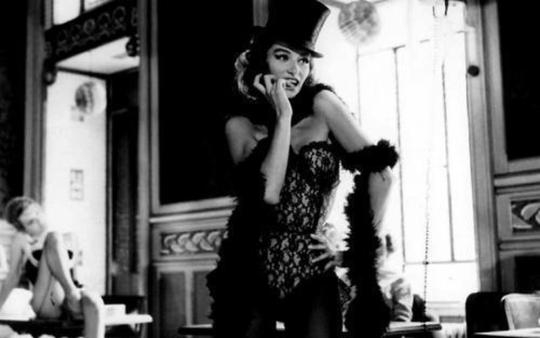
Anouk Aimée
Elegant French film actor best known for her roles in the classic films A Man and a Woman, Lola, and La Dolce Vita
Show-business history records how the young Françoise Sorya was walking with her parents in Paris when they were approached by the director Henri Calef, who asked whether the teenager could play a part in his forthcoming production La Maison Sous la Mer (1947). The answer was yes and Françoise took the professional name Anouk after the character she was to play.
A short while later, she accepted a part in La Fleur de l’Age and its director, Marcel Carné, added Aimée to her chosen name. In the event the film was not completed, but its writer, Jacques Prévert, had been captivated by the beauty and natural talent of the young actor and wrote a screenplay indebted to Romeo and Juliet for her. As a result, Anouk Aimée, who has died aged 92, took the role of Juliette in The Lovers of Verona (1949).
The success of the movie launched her career, which included some 70 feature films, stage work and a handful of TV movies and miniseries. Her greatest successes were La Dolce Vita (1960), Lola (1961) and A Man and a Woman (1966), for which she won a Golden Globe and an Oscar nomination, but she chose work erratically and happily sacrificed her career for a private life that included an absence from the screen during the first six years of her marriage to the actor Albert Finney.
Daughter of Geneviève (nee Durand), who acted under the name Geneviève Sorya, and Henri Dreyfus, also an actor, she was born in Paris. During the occupation, her parents moved her to the country for safety and she used her mother’s name rather than that of her Jewish father. He later changed his name to Henry Murray.
Aimée studied both drama and dance before her first starring role in The Lovers of Verona, as the would-be actor Juliette, who, while working as an understudy, meets and falls tragically in love with a set carpenter (Serge Reggiani). That success took her to Britain for a part opposite Trevor Howard in The Golden Salamander (1950). Although she was well received in the rather dull film, she subsequently married the Greek director Nico Papatakis and had a daughter, and did not appear on screen again until The Crimson Curtain (1953).
This was a stylishly made period romance, adapted by the writer Alexandre Astruc from a short story as his directorial debut. Despite a duration of 43 minutes and narration rather than dialogue, it proved a critical success. Aimée, cast as a young woman with heart problems who sacrifices herself for her lover, embarked on a busy international career.
She played a prostitute, Jeanne, in an adaptation of a Georges Simenon story, The Man Who Watched the Trains Go By (aka The Paris Express, 1952); co-starred in a somewhat pretentious thriller, Bad Liaisons (1955), directed by Astruc; and played a small role in Lovers of Paris (1957), which starred Gérard Philipe, France’s leading romantic actor.
She was invited to play opposite him in Jacques Becker’s Montparnasse 19 (1958), a biopic of Modigliani in which she took the role of the woman who eventually married the artist. She moved straight to another prestige production for Georges Franju, The Keepers (1959), playing a woman who tries to help a young man wrongly committed to a psychiatric hospital by his father. In Federico Fellini’s La Dolce Vita, starring Marcello Mastroianni, she had the powerful role of a jaded socialite and found in the director a new freedom and vitality that kept her working in Italy for much of the next six years.
However, her best role was in Lola, Jacques Demy’s enchanting debut, dedicated to Max Ophuls and romantic cinema, which it affectionately satirised. Aimée as the not very talented singer waiting for her sailor lover to return made the character, in top hat and feather boa, vivacious yet vulnerable. Sadly, most of the other films in this period were less distinguished, and only Fellini’s 8½ (1963) placed her in a quality movie, as Mastroianni’s girlfriend.
She received the greatest popular acclaim of her long career in Claude Lelouch’s A Man and a Woman. It took the Oscar as best foreign film, and the Cannes festival award as best film, with an Oscar nomination for Aimée as best actress. She did not win, but there was compensation in receiving the equivalent award from Bafta, a Golden Globe and starring in a huge box office hit. Its success led to a sequel, A Man and a Woman – Twenty Years Later (1986).
After starring in the elegant and mysterious Un Soir, Un Train (1968) for the Belgian director André Delvaux, she again played Lola, in Model Shop (1969), which marked Demy’s American debut. The film flopped, not least because Aimée seemed uninterested and unengaged by her role.
The same could be said of The Appointment and Justine (both 1969). The former was a misguided project by the New Yorker Sidney Lumet and suffered from an arty pseudo-European “sophistication” that alienated audiences. Justine was taken over by George Cukor early in the shooting. The director, famous for his rapport with female actors, later remarked that it was his only experience working with “somebody who didn’t try”. It was a commercial failure.
She returned to the screen in 1976 with Second Chance. There was an upturn when she received the best actress award at the 1980 Cannes festival for A Leap in the Dark, an atmospheric work by Marco Bellochio. Aimée took the character role of a spinster sister of a judge (Michel Piccoli), also unmarried, each enduring lives of quiet desperation. This was one of eight films she made with Piccoli, a friend since their days as drama students.
She worked for another distinguished director, Bernardo Bertolucci, in Tragedy of a Ridiculous Man (1981), but her cool talent was swamped by the ebullience of her co-star, Ugo Tognazzi. The political thriller enjoyed little success either critically or commercially. Aimée subsequently worked mainly in France, with occasional sorties into international movies, including a small role in Jerzy Skolimowski’s Success Is the Best Revenge (1984), and a larger one in Bethune: The Making of a Hero (1990), a co-production celebrating the Canadian doctor Norman Bethune, portrayed by Donald Sutherland.
She was among the prestige cast in Robert Altman’s stargazer’s delight, Prêt-à-Porter (1994), which had fun at the expense of the fashion trade. In 2002 she received a lifetime achievement Golden Bear award at the Berlin International film festival.
She continued to work during the following decade, and defended criticisms of her occasional misfires, saying that while some of her choices had been poor, she was still proud of her “not unimpressive” career. She added that actors, too, need to work for money.
She had a pivotal role in The Birch-Tree Meadow (2003), co-written by Jeanne Moreau and directed by Marceline Loridon-Ivens. This sturdy work cast her as a Holocaust survivor returning to the scenes of the atrocities and encountering the photographer grandson of an SS officer.
In lighter mood in the comedy Happily Ever After (2004), she played the mother to the central character Vincent, a role taken by the director Yvan Attal. In 2006, she was attracted to another supporting role as the mother to the lead actor in the intriguing Hotel Harabati.
The amiable The One I Love (2009) was followed by a return to the director who had given her international fame in 1966. Lelouch’s Ces Amours-là was a sad disappointment, however, and Aimée’s following film, Paris Connections (financed by Tesco and sold through their retail outlets), based on a Jackie Collins novel, seems to have fared little better.
She then worked with the novelist and film-maker Philippe Claudel in his second feature, Tous les Soleils (2011), in which she took the role of a dying woman. After Mince Alors! (2012), her 90th screen credit, in which she had a small role, as Maman, she effectively retired, living in Montparnasse, Paris, with her daughter, Manuela.
However, in 2019 she was tempted to return for a final film with Lelouch and the chance to work again with Jean-Louis Trintignant, her co-star from A Man and a Woman. The film The Best Years of a Life was the second follow-up to that famous original and dealt with love and memory in old age. It was celebrated for showing the enduring magnetism of its stars.
Aimée was married and divorced four times. She is survived by Manuela.
🔔 Anouk Aimée (Nicole Françoise Florence Dreyfus), actor, born 27 April 1932; died 18 June 2024
Daily inspiration. Discover more photos at Just for Books…?
16 notes
·
View notes
Text
My 25 Favorite Films of 2023
It's that time of year again! Here are my top 25 films of 2023.
25. Joy Ride

Following in the footsteps of Bridesmaids and Girls Trip, Joy Ride offers some of the biggest laughs of 2023 proving once again women can be just as raunchy as men. The cast includes up-and-comers Ashley Park, Oscar nominee Stephanie Hsu, and a scene-stealing breakthrough performance from Sherry Cola. Joy Ride marks a strong debut from writer-director Adele Lim.
24. Theater Camp
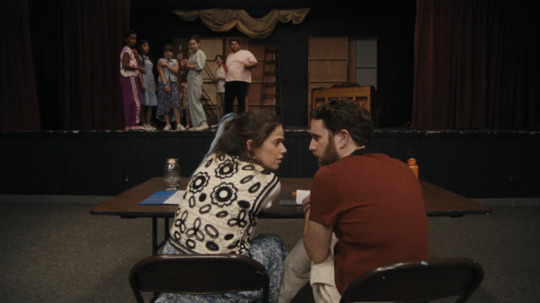
Anyone who had aspirations of becoming an actor can relate to Theater Camp, a mockumentary about the staff of a theater camp struggling to keep it afloat. Molly Gordon, Ben Platt, and Noah Galvin lead both behind and in front of the camera in this superb comedy that will leave you singing from the rooftops.
23. A Thousand and One
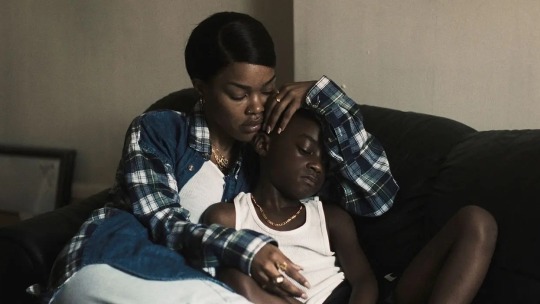
A Thousand and One is a heartbreaking indie film about a mother's desperate effort to form a bond with her estranged son by kidnapping him from the foster care system following her stint in prison. Teyana Taylor packs an emotional punch with her crushing performance with the help of A.V. Rockwell in her feature debut as a writer-director.
22. Thanksgiving
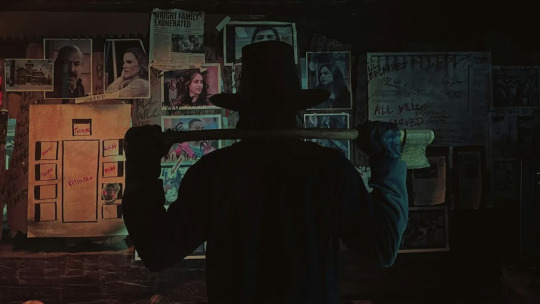
Eli Roth's filmography in horror is a mixed record, but his latest flick Thanksgiving may be his best work yet. Not only is it a solid slasher with great over-the-top killings, its brilliantly hilarious. In a time where horror franchises can be tiresome, Thanksgiving is one that could call for a second or third helping.
21. Somewhere in Queens
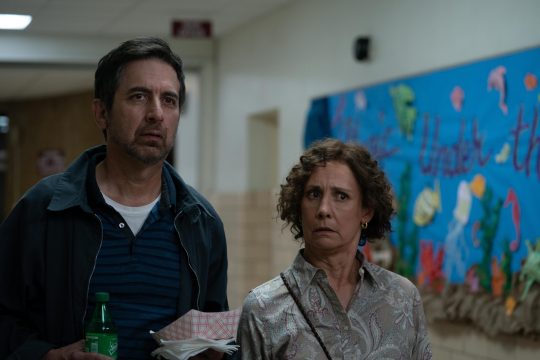
TV icon Ray Romano makes his feature directorial debut in the family comedy Somewhere in Queens. He stars as the father of a promising high school basketball player who goes through perhaps desperate means to assure he lands a college scholarship. Joined by the wonderful Laurie Metcalf, Somewhere in Queens has plenty of laughs as well as plenty of heart.
20. Dream Scenario

The remarkable comeback of Nicolas Cage continues with his brilliant performance in Dream Scenario, a dark fantasy horror comedy in which he plays a college professor who inexplicably starts appearing in everyone's dreams, sparking a national phenomenon that will ultimately take a personal toll. Cage balances the absurdity of the situation his character is in with emotional heft that comes with it. This marks Norwegian filmmaker Kristoffer Borgli's first English-language film and based on how well-executed Dream Scenario is, hopefully it won't be his last.
19. The Covenant

Guy Ritchie's latest The Covenant is a heart-pounding war film based on the true story of Sgt. John Kinley's rescue effort of his Afghan interpreter Ahmed. Jake Gyllenhaal and Dar Salim make a perfect duo in this dramatic, suspenseful film that may be Ritchie's strongest work to date.
18. Are You There God? It’s Me, Margaret.
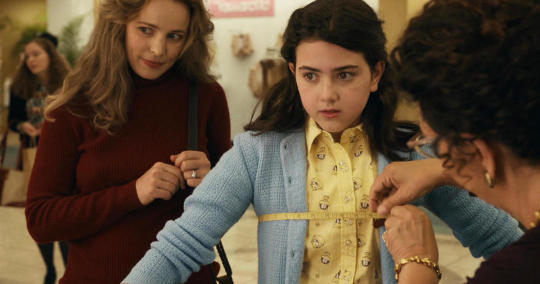
Judy Blume's 1970 adolescent classic Are You There God? It’s Me, Margaret. finally made its way to the big screen this year in the heartwarming coming-of-age tale of a girl's awkward journey from childhood to adulthood as well as the complexities that come from being an interfaith household. Abby Ryder Fortson shines as the titular Margaret in an outstanding performance not often seen from child actors. Also, we need more Rachel McAdams.
17. BlackBerry
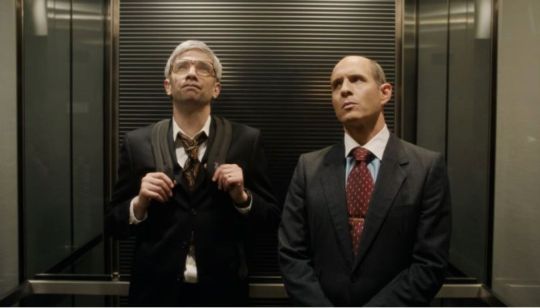
Arguably the biggest surprise of 2023, BlackBerry offers some of the best laughs in the comedic retelling of the rise and fall of the iconic BlackBerry device. BlackBerry is a showcase of talent of its star Jay Baruchel, Matt Johnson (who also directed and co-wrote the film), and Glenn Howerton of It's Always Sunny fame, easily giving one of the best on-screen performances of the entire year.
16. You Hurt My Feelings

Writer-director Nicole Holofcener reunites with her Enough Said star Julia Louis-Dreyfus with You Hurt My Feelings, which centers a turbulent chapter in a couple's marriage after a novelist overhears her husband mocking her latest book. The dramedy examines the thought-provoking nuances of how fully honest one actually should be with their spouse (the answer may surprise you!). The greatest strength from Holofcener's latest is how its humor comes naturally from the reality of relationships.
15. Mission: Impossible - Dead Reckoning Part One

Mission: Impossible does the unthinkable in Hollywood: keeping a franchise in top-notch shape. Dead Reckoning Part One, the whopping *seventh* installment of the Ethan Hunt saga, delivers on a compelling plot and incredible action sequences, all of which is cemented by the star power of Tom Cruise, who has carried this spy franchise for nearly 20 years. There have been hints that Dead Reckoning may be the beginning of the end for Mission: Impossible, and if that's the case, it's going out with a bang.
14. Talk to Me

The best horror movie of 2023, Talk to Me is a chilling film about a group of teenager's ill-fated decision of doing a viral challenge of interacting with the dead, only to mistakenly leave the portal open between the living and the spirit world. What makes Talk to Me work is the family drama at the core of the film and the powerful performance from its troubled heroine Sophie Wilde.
13. Sisu
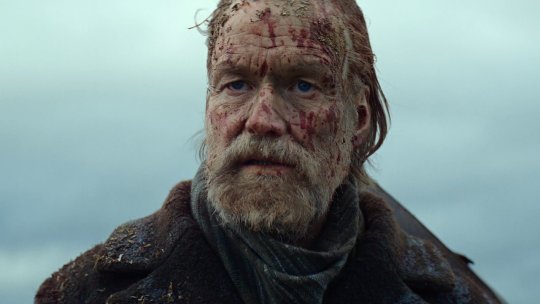
Inglorious Basterds meets Mad Max: Fury Road meets John Wick, Sisu is a WWII-era revenge action flick about a gold prospector's quest to retrieve the gold that was stolen from him from a group of Nazis. Full of brutal, bloody fight sequences with a twisted sense of humor, Sisu is one helluva ride.
12. Creed III

Creed III is a throwback to the era where Hollywood blockbusters were able to provide complete satisfaction. The latest installment of the Rocky spin-off franchise marked the strong directorial debut of its star Michael B. Jordan and also may have sadly marked the final film of the incredibly talented Jonathan Majors, whose recent assault conviction may be a knockout punch to an otherwise booming career.
11. May December

Often having vibes of a soap opera, Todd Haynes' May December is a compelling and at times disturbing film of an actress (played by Natalie Portman) who shadows the woman she's depicting in a film (played by Julianne Moore) famous for her 90s love affair with a then 13-year-old, who later became her husband. Despite the powerhouse performances from the two Oscar winners, the film really belongs to rising star Charles Melton, whose character finally comes to grips with the trauma he unknowingly endured as a child. And Melton's performance is among 2023's best.
10. Anatomy of a Fall

We don't often get great courtroom dramatic thrillers these days which is why Anatomy of a Fall really stands out. German actress Sandra Hüller gives a breakthrough performance as a wife and mother who becomes the prime suspect in what authorities believe is the murder of her husband, who had fallen to his death from the attic window. With plenty of twists and turns, Anatomy of a Fall will keep viewers guessing throughout.
9. Maestro
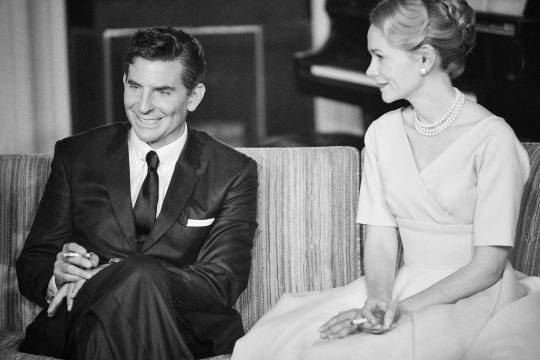
Not only does Bradley Cooper give the performance of his career, he has also shown his ability to direct is no fluke. Maestro, a biopic that spotlights the personal drama of legendary composer Leonard Bernstein, is a beautifully-shot, well-acted film that solidifies Cooper as one of Hollywood's newest talented filmmakers.
8. Spider-Man: Across the Spider-Verse

One would assume that a Spider-Man cartoon would solely be geared towards children but Spider-Man: Across the Spider-Verse is such a sophisticated film between its complex plot and the remarkable animation that are a continuation from its 2018 Into the Spider-Verse predecessor. Between a strong voice cast, an amazing score and a brilliant cliffhanger, Across the Spider-Verse was the shining gem of the many superhero duds 2023 had to offer.
7. Killers of the Flower Moon
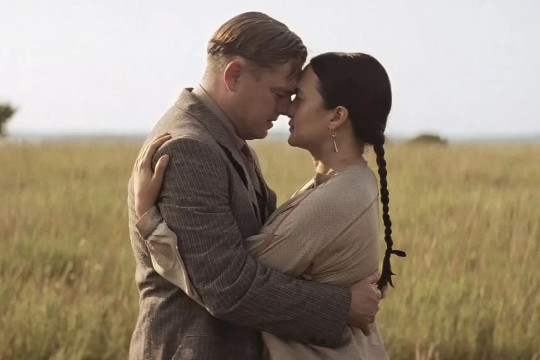
At 81-years-old, legendary director Martin Scorsese hasn't lost his step with Killers of the Flower Moon, his best film in at least a decade. The crime drama is based on a true story on the 1920s murders of members of Osage Nation and its ties to the marriage Ernest Burkhart and Mollie Kyle, played by the reliably gifted Leonardo DiCaprio and powerful newcomer Lily Gladstone.
6. Saltburn

Following her strong debut with 2020's Promising Young Woman, filmmaker Emerald Fennell makes a valiant return with her twisted comedic psychological drama Saltburn, which surrounds an Oxford student who is quickly embraced by the wealthy family of a classmate and the jarring fallout as a result. Barry Keoghan (The Banshees of Irisherin, Dunkirk) proves he's more than capable of being the leading man and is joined by rich ensemble including Rosamund Pike, Jacob Elordi, Richard E. Grant and Carey Mulligan. With stunning visuals and some of the most shocking things you'll see onscreen in 2023, Saltburn is a stirring work of art.
5. The Holdovers

It's been a long time since a new Christmas movie can live up to beloved holiday classics and Alexander Payne makes the closest effort with The Holdovers, a 1970-set dramedy about a miserable teacher at a boys academy who is stuck essentially babysitting the "holdover" students who didn't go home for the holidays. Joining the always-brilliant Paul Giamatti is newcomer Dominic Sessa as his troublesome student and Da'Vine Joy Randolph, who gives a powerful Oscar-worthy performance as the cook mourning over the loss of her son. The Holdovers is the perfect film to warm your heart over the holidays this year and every year going forward.
4. Past Lives

Perhaps one of the more unsung heroes of 2023 cinema, Past Lives is a touching story about love and what if. Greta Lee stars in a breakout role as a married woman who rekindles a relationship with a childhood friend from South Korea but rather than going down the typical "will they, won't they" or "love triangle" paths this film easily could've taken, Past Lives delves into the emotional complexities with such tenderness that only writer/director Celine Song could've told (the film is semi-autobiographical).
3. Oppenheimer

If anyone knows how to make a biopic an epic, it's Christopher Nolan. Oppenheimer is essentially two films rolled into one- a tick-tock thriller about the creation of the atomic bomb as well as a political drama that J. Robert Oppenheimer endured. Cillian Murphy gives the performance of his career and leads a gigantic ensemble cast in a film that despite its 3-hour running time goes by fast. And while Barbie may have won the box office battle, Oppenheimer certain won the war in more ways than one.
2. Polite Society

Polite Society is a brilliant action comedy following an aspiring stuntwoman who believes her sister is marrying into a sinister family. In the style of a Tarantino movie, up-and-coming filmmaker Nida Manzoor makes a strong feature debut that is the epitome of a fun popcorn movie, which have been in short supply in recent years.
Poor Things

Yorgos Lanthimos has quickly risen as of the strongest filmmakers of this generation, proving so once again with his latest film Poor Things. Emma Stone gives an Oscar-worthy performance as a woman brought back to life who embarks on a journey of self-discovery and autonomy and is accompanied by an excellent supporting cast. Like a modern-day Tim Burton, Lanthimos was able to create a mesmerizing universe with incredible production design, a whimsical music score, and stunning cinematography. Going to the movies is meant to be an escape, and Poor Things perfectly encapsulates that.
#2023#Poor Things#Emma Stone#Spider-Man#across the spiderverse#oppenheimer#Past Lives#May December#Natalie Portman#julianne moore#charles melton#Theater Camp#Saltburn#jacob elordi#Polite Society#Bradley Cooper#carey mulligan#The Holdovers#Tom Cruise#killers of the flower moon#leonardo decaprio#Martin Scorsese#christopher nolan#miles morales#joy ride#barry keoghan#molly gordon#Ben Platt#oscars
40 notes
·
View notes
Text
Letters from Watson: the Naval Treaty
Part 3: The Fun Bits
Holmes, your Watson is a DOCTOR, it's not a question of if his cases are more interesting, it's a question of people getting medical care on time!
Not that he appears to be seeing a lot of patients at present - I guess the multitude of bacterial and viral illnesses that become more prevalent during the summer - whether they be typhoid or polio - aren't driving a lot of patients his way this year.
Forbes is not a member of the Yard who already likes or appreciates Holmes: when it comes to the credit for the case I wonder if Watson tagging along ever clues the police in that it will (eventually) be a case where the credit does go to Holmes.
(Watson had published only the two novels by 1889 so if the police ever associated his presence with not getting credit, they would not have known to do so now.)
If Lord Holdhurst is modeled after a premier (prime minister) who had actually been in office between 1889 and 1893, our choices are either William Ewart Gladstone (In office 1892-1894) or Robert Gascoyne-Cecil (1886-1892) again. Gascoyne-Cecil's party is listed as conservative, so it's probably him, if anything, though that uh... fucks up our timeline if he's not prime minister YET.
If "Holdhurst" and "Bellinger" (from Second Stain) are both intended to be Gascone-Cecil and Watson's dates in this story are right, his government had TWO document disappearances within the space of about three months. Within six months, if we take fall or very late summer of 1889 to be the date for The Second Stain (Which is contrary to what Watson has said in this story.)
If Holdhurst is intended to be somebody else who is likely to be in the running for prime minister eventually, then Holmes is paying atypical attention to party politics (possibly due to his brother?) and I have no leads on who Holdhurst is an expy for.
The Bertillon system of measurements was a record not only of a convicted criminal's photograph, but head and hand measurements, so they could more easily be identified later. His system's most famous failure would be in the Dreyfus Affair in 1894
Once again, Holmes enlists the help of the only woman connected with the case. And gets the person currently in the most danger away from the scene.
10 notes
·
View notes
Text



a london ornament
the first illustration displays digital reissue of monotype’s recutting [english monotype 218] of an arabesque unit, which d.l. vervliet attributes to robert granjon¹. vervliet found its first display in the office of london printer henry bynneman in 1569 [2nd illustration²], & notes: granjon founts had arrived around this time in london; exiled antwerp punchcutter françois guyot was residing in london & «is known to have provided types to printer john day»³. vervliet gets his dates from oastler⁴, but oastler only mentions that day was among the first london printers to use guyot types, & françois’ son, gabriel guyot, «may have been instrumental» in bringing to london the guyot double pica italic. oastler does give evidence that guyot, his family, & servants resided in john day’s house in 1568 (françois returned to antwerp in 1570, where he died shortly thereafter). vervliet dismisses guyot as the ornament’s designer on aesthetic grounds.⁵ as evidenced by his italics guyot was an admirer of granjon; indeed, harry carter views guyot’s types as «revolutionary in effect, bringing an archaic regional typography almost into line with Paris» ⁶. the oldest know type specimen by a founder who was not also a printer⁷ is confirmed by carter to show the types of françois guyot; the sheet survived for having been bound in with a set of elizabethan proclamations—arguably, guyot prepared the sheet as advertisement of his types to london printers⁸: on it appears a solitary ornament, a vine leaf [3rd illustration⁹]. granjon cut many vine leaves—no surprise to find guyot’s version. however, i must disagree with vervliet on one point: bynneman’s ornament i do not find particularly granjonesque, & the engraving of guyot’s vine leaf seems consistent with the hand that cut bynneman’s ornament. it is conceivable that day held strikes of guyot ornaments—his property or that of guyot—to cast sorts for use in his office or to sell to other london printers, such as bynneman.
¹ hendrik d.l. vervliet, Granjon’s Flowers, oak knoll press, new castle (de), 2016, p99. ² section from the border on the title-page of: st anselm, Epistolæ duæ ... ad Nicholaum Papam primum de cęlibatu cleri., henry bynneman, london, 1569. with thanks to the british library for permitting my examination of their copy [G.11998. 1360.a.16.]. ³ ibid. p95. ⁴ c.l. oastler, John Day | the Elizabethan Printer, oxford bibliographical society, ocaasional publication no. 10, oxford, 1975, pp. 34–5. reprint of oastler’s 1965 oxford thesis [based upon archival records]. ⁵ op. cit., p95. ⁶ harry carter, «The Types of Christopher Plantin», The Library, volume s5-XI, issue 3, 1956, p177. ⁷ specimen of 1565—only known copy, folger shakespeare library. ⁸ op. cit., carter. a tentative attribution was given by a.f. johnson in t.b. reed, A History of the Old English Letter Foundries, ed. a.f. johnson, faber&faber, london, 1952, pp. 91–2. ⁹ section of no. 1 in john dreyfus, Type Specimen Facsimiles, bowes & bowes and putnam, london, 1963.
#typography#arabesque#granjon#françois guyot#john day#henry bynneman#d.l. vervliet#harry carter#a.f johnson#c.l. oastler
2 notes
·
View notes
Text
The blood libel is a centuries-old odious antisemitic canard that was used to accuse Jews of murdering Christian children and obtaining the victims’ blood in accordance with the “kosher rules” for the slaughter of animals, and using their blood in the performance of religious rituals, especially the baking of matzot for Passover. Ritual murder claims against the Jews often arose in the context of the otherwise unexplained murders of children and, in many cases, the alleged victims of human sacrifice have become venerated as Christian martyrs.
The origin of this slander against the Jewish people – which included allegations that they poisoned wells and desecrated the “host” – can be traced back to the Crusades, with the first recorded libel occurring in Fulda, Germany, in 1235. Countless recorded cases of blood libel resulted in the arrest and murder of Jews and, with the allegations against individuals often expanding to accusations against all the Jewish people, entire Jewish communities were persecuted, expelled, and murdered.
The most notorious antisemitic political trial was arguably the Dreyfus Affair in France (1894 – 1906) and, although Dreyfus was accused of treason, not ritual murder, the course of the trial and its consequences were similar in many ways to historic blood libel cases. It was in this environment that the notorious Hilsner Affair began.
Leopold Hilsner (1876 -1928) was a physically and mentally limited 23-year-old unemployed Jewish vagabond journeyman with a history of petty theft who lived with his mother in a basement of a German Jewish school paid for by the charitable Polná Jewish community in Bohemia. The Hilsner Affair was a series of antisemitic trials in which he was accused of murdering Anežka Hrůzová, a local 19-year-old Czech Catholic, and using her blood for Jewish rituals. On the afternoon of March 29, 1899, which was Ash Wednesday, Hrůzová, a seamstress, left her place of employment in Polná, a German-speaking town of about 5,000 people, including 212 Jews, in eastern Bohemia about 60 miles from Prague. She set out on her two-mile walk along her usual route running alongside the Březina woods to her home adjacent to the Jewish quarter in the Czech village of Malá Vĕžnice, but she never arrived.
Three days later – on April 1, 1899, the day before Easter – her body was discovered in the forest face down and partially clothed with her throat slit and her bloodied head wrapped in part of her torn blouse. Next to the body, investigators found clothing torn near a pool of blood, some blood-stained stones, parts of her garments, and a rope with which she had been either strangled to death or dragged post-mortem to the place where the corpse was found. Because her disappearance had taken place during Passover and very little blood was found near her body, the authorities quickly concluded that the Christian girl had been murdered by a Jew, who had taken her blood to bake matzot for the holiday. The notorious antisemitic Austrian priest, Father Josef Deckert, published one of the first pamphlets alleging that Anežka was the victim of ritual murder; the Jew-hating Vienna newspaper, Deutsches Volksblatt, piled on; and the Austrian public lost no time in perpetrating the blood libel.
The investigating detectives turned their attention to Hilsner and they focused on his alleged ritual murder motive to the extent that they ignored all other suspects and disregarded all evidence that did not fit into their pre-determined narrative. For example, they never checked out allegations that Anežka was killed by her brother, Jan, who fled to the United States. In 1961, a report spread in Czechoslovakia that Jan made a hospital deathbed confession that he had murdered his sister to put himself in position to inherit their parents’ entire estate. The Czechoslovakian-born Israeli chargé d’affaires in Prague, Eliahu Kurt Livne, gathered evidence about the report and forwarded it to Israel’s Foreign Office, but the deathbed confession story was never confirmed.
A police search of Hilsner’s house yielded no incriminating evidence, and he maintained that he had left the city on the afternoon of the murder long before it could have been committed. Nonetheless, although there was no basis at all to charge him, the local aristocracy and the seditious press urged his prosecution and he was arrested. On the very day of his being taken into custody, hundreds of protestors entered the Jewish quarter and began throwing stones at windows and attacking Jewish shops – evocative of the Kristallnacht that would take place 39 years later – and rioting against Jews throughout Bohemia and Moravia continued throughout the Affair.
At his murder trial on September 12-16, 1899, Hilsner denied all knowledge of the crime. The only alleged physical evidence against him was a pair of damp trousers on which some stains were found, which testifying chemical experts said “might” have been blood and which they said “looked like” an attempt had been made to wash it. One witness had informed the legal committee set up by the local authorities to investigate the crime (which paid for such testimony) that she had seen Hilsner from 2,000 feet away (!) together with two other Jews at the scene of the crime on the day of the murder, but when she later saw Hilsner at his trial, she admitted that she could not be certain he was the same man that she had seen. Nonetheless, the court, after denying several requests by Hilsner’s counsel to test the chief witness’s eyesight, accepted her incriminating “eyewitness” testimony.
Media coverage of the investigation, including particularly in Catholic, Czech nationalist and antisemitic newspapers, focused on Hilsner’s Judaism, the proximity of the murder to Passover, and the ancient blood libel. Similarly, the local medical examiners, emphasizing that the victim’s body had been nearly completely emptied of blood (and that, therefore, the blood had to have been removed by the killer for nefarious purposes), responded to leading questions put to them by the court by raising the blood libel. Karel Baxa, a radical right-wing nationalist politician who served as counsel for the victim’s family and was named by the antisemitic press as “the savior of Christendom,” focused obsessively on the idea of Jewish ritual murder throughout the trial. In the prosecutor’s closing argument, he left little to doubt about Hilsner’s motive: “Disgusting people, people of another race, people who have acted like animals, have murdered a virtuous Christian virgin so that they could use her blood.”
Exhibited here is the Kol Koreh against the blood libel issued by the Rabbis of London in December 1899 during the Hilsner Affair:
A SOLEMN DECLARATION TO ALL THE NATIONS: We have learned, with grief and indignation, that the most hideous calumny which malice and hatred ever invented, is now being again revived against our people. The terrible accusation is made by evil-disposed persons, and industriously circulated by the antisemitic press, that Jews require human blood for their Passover ritual, or for some other religious rite, public or secret, and that Christian children are consequently entrapped and slaughtered for that purpose. We should have hoped that no person of sense would attach the slightest credence to this fable, which, though published against us in olden times of persecution and intolerance, has never been supported by a tittle of evidence. It is, moreover, directly at variance with all the well-known laws and customs of Judaism, as handed down to us by our books and traditions, and its falsehood has been acknowledged by eminent heads of the Church and proved by non-Jewish scholars. But as, unfortunately, there are still people who seem to believe this legend of Ritual Murder, and as this belief has lately led to acts of violence and other persecutions being inflicted on Jews in many parts of Austria, and to the spread of ill-will and hatred in many other places, we deem it right to publish this our Solemn Declaration, however painful the necessity for such action on our part. We solemnly, sincerely, and truly declare and affirm that in no book ever written by any man professing the Jewish religion, is there contained any ordinance or direction relating to the use of human blood at the Passover festival, or at any of our celebrations or rites, whether public or domestic. We, the undersigned, holding Rabbinical offices, are the disciples of Rabbis, who have been conversant with every detail of Jewish usage and history, and who have communicated to us all the knowledge of Hebrew law and tradition which they possessed, and we have never heard of such ordinance, direction, custom or usage, whether public or secret, as existing among any community or section of Jews. And whenever our teachers have spoken to us about this allegation of “ritual murder,” they have denounced it as foul and unfunded slander, as we ourselves declare it to be. And we, will all solemnity, and in the presence of Almighty G-d and man, make our Declaration, as the truth, the whole truth, and nothing but the truth.
Although testimony at trial established that Hilsner was incapable of such a violent act – indeed, the doctors believed him too weak to fight alone against the much more vital Anežka – he and two unidentified coconspirators (no attempt was ever made to find these alleged accomplices and to bring them to justice) were convicted of aggravated murder and Hilsner was sentenced to death by hanging. The ramifications of the conviction were felt throughout the Austria-Hungarian empire, but most particularly in Vienna, where an antisemitic assembly, attended by Mayor Karl Lueger, presented the Jews as an international, “interconnected power that could destroy states” and that the Hilsner trial proved that the Jews “have set their foot on our necks; perhaps they want our blood as well.”
On September 20, only a few days after his first trial, Hilsner was confronted by hostile fellow prisoners, who pointed to carpenters working in the prison courtyard, informed him that gallows were being constructed for his hanging, and demanded that he name his “accomplices.” They promised him a commutation of his death sentence if he identified his collaborators and, beyond terrified, he named two Jews, Joshua Erbmann and Solomon Wassermann, as his fellows-in-crime. Perhaps due to his diminished mental capacity, fear and confusion, he reversed course several times: On September 7, he retracted his allegations against the other two Jews; on October 7, he reiterated his accusations against them; and on November 20, he again maintained that he had incorrectly named Erbmann and Wasserman. Fortunately, the alleged collaborators had airtight alibis: one had been incarcerated on the day of the murder, and the other was visiting poorhouses in Moravia at the time.
Hilsner’s counsel appealed to the Supreme Court in Vienna to overturn the verdict, but it received little attention until Tomáš G. Masaryk (1850-1937), the future first president of Czechoslovakia and then a professor of sociology at the Czech University in Prague, intervened forcefully on Hilsner’s behalf and spearheaded the appeal in the Supreme Court. He cited numerous technical errors made at trial, and he argued that the forensic work, the witness testimony, and nearly every other aspect of the case against Hilsner had been a set-up. In an 1899 pamphlet, The Need to Review the Polná Trial, he urged a complete review of the case and demanded a retrial, and in 1900, he authored The Meaning of the Polná Trial for the Blood Superstition, in which he presented a comprehensive attack on the allegation of ritual murder.
Comparisons were regularly drawn between the Dreyfus Affair and the Hilsner Affair, as evidenced by this postcard, and Masaryk was often referred to as the “Czech Zola.”
Masaryk’s involvement in the case was a gutsy and unpopular move, as he put his reputation, his career, and his future on the line to defend the Jewish people in general, and Hilsner in particular, against the loathsome blood libel. Standing virtually alone in the face of overwhelming hostility, he was vilified by the Church and the Czech media; his pamphlets were banned, and officials at the Czech University forced him to take a leave of absence from his teaching. Known as the “George Washington of Czechoslovakia,” Masaryk proved to be a good friend of the Jews, not only during the Hilsner Affair, but also during his term as president of Czechoslovakia (1918 – 1935).
During the Masaryk era, Czechoslovakia belonged to a small group of states that officially recognized Jewish nationality and granted Jews full civil rights. Masaryk was a strong supporter of Zionism; as he said in 1918:
The Jews will enjoy the same rights as all the other citizens of our State . . . As regards Zionism, I can only express my sympathy with it and with the national movement of the Jewish people in general, since it is of great moral significance. I have observed the Zionist and national movement of the Jews in Europe and in our own country and have come to understand that it is not a movement of political chauvinism, but one striving for the rebirth of its people.
In 1927, Masaryk visited Eretz Yisrael where, upon his arrival in Jerusalem, he was greeted with great affection by a massive crowd that included representatives of virtually every sector of the Jewish community. Heading his reception was Rav Yosef Chaim Sonnenfeld, chief rabbi of the Edah HaCharedit and a staunch opponent of political Zionism, who escorted the president through the throngs and the decorated streets. In recognition of his friendship with the Jews, the kibbutz Kfar Masaryk in the Galilee was named for him.
In response to Masaryk’s filing and the publicity generated by his pamphlets, the high court ordered the medical faculty at the Czech University in Prague to review the findings of the original medical commission. In its subsequent report, the faculty issued a severe critique of the medical examiners’ criminological work, including particularly their false claim that the amount of blood at the site of Anežka’s corpse was materially less than the amount that should have been found in a violent death. Accordingly, the court nullified the original verdict and remanded the case to the Písek court for a new trial, but now Hilsner faced a second murder accusation: Marie Klímová, a servant who had disappeared on July 17, 1898. When a female body was found on October 27 in the same forest where Anežka’s body had been found, the decomposition was so advanced that the authorities could not even determine whether the girl had been murdered; nonetheless, the condition of the corpse bore some resemblance to that of the Anežka Hrůzová crime scene, which the prosecutor decided constituted sufficient basis for them to charge Hilsner with the murder.
The Supreme Court had expressly rejected the ritual murder theory, so the prosecutor, forced to find a different theory, decided to try Hilsner as a sexual predator, and the prosecution was materially assisted by the testimony of witnesses who, overnight, somehow became more certain in their testimony. For example, a witness who had previously testified that they had seen Hilsner with a knife, but could not provide any description of the weapon, was now adamant that the blade was a schochet’s knife (used by Jews in their ritual kosher slaughtering), and the “strange” Jews who a key witness had claimed she had seen accompanying Hilsner and whom she could not describe were now described in great detail. When Hilsner’s counsel showed the witnesses transcripts of their testimony at the first trial and asked them to compare with it their new testimony at the second trial, they alleged that either they had been intimidated by the judge or that their statements had been incorrectly transcribed.
After a 17-day retrial ending November 14, 1900, Hilsner was convicted of both murders and sentenced to death, but the death sentence was commuted to life imprisonment in 1901 by Emperor Franz Josef. Hilsner’s requests for a new trial were all denied and, although he was finally pardoned by Emperor Charles I on March 24, 1918 as one of his first acts upon succeeding to the Hapsburg throne, the conviction was never annulled. (In 1919, the organization for combatting antisemitism in Austria made a futile appeal for a new trial to clear his name, but the attempt failed.) Anežka Hrůzová’s killer was never found and, although suspicions have been directed at various individuals over time, no one else was ever charged with the murders.
It is interesting to note that in writing The Trial, the celebrated novel in which a man is prosecuted by an unknown authority and is tried and convicted of a crime that is never disclosed to him, Franz Kafka was inspired by contemporary historical events, including particularly the Hilsner Affair, which took place in his own country. Allegations that Anežka Hrůzová’s cut throat was consistent with schechita requirements to make an animal kosher must have hit Kafka, the 16-year-old grandson of a shochet, particularly hard, and he was also likely affected by his father’s active involvement in the Central Association for the Preservation of Jewish Affairs, which took a strong public stand in support of Hilsner and against the blood libel hoax.
According to Gustav Janouch, a Czech poet best known for his memoir Conversations with Kafka, Kafka cited the Hilsner Affair as the starting point of his awareness of the Jewish condition: “a despised individual, considered by the surrounding world as a stranger, only tolerated – in other words, a pariah.” In Kafka’s correspondence with Milena Jesenska, one of the great loves of his life, he makes a direct reference to the Hilsner affair as a definitive example of the irrationality of antisemitism: “I cannot understand how people came to this idea of ritual murder.”
Hilsner spent the rest of his miserable life as a beggar traveling through the Hapsburg monarchy under the name Heller. He exhibited almost unimaginable ingratitude when he rebuked Masaryk after the Czech president declined to meet with him, and an almost psychotic view of his own importance when he claimed that it was he who made Masaryk famous. Hilsner’s tombstone (see exhibit) reads: “As the innocent victim of lies of ritual murder, he languished in prison for 19 years.” A plaque at his final residence reads “Here stood the house where Leopold Hilsner (1876-1928) lived before his death. As an innocent victim of a lie about a ritual murder, he suffered 19 years in jail.”
At the end of the day, the Hilsner Affair was perhaps more terrifying than the Dreyfus Affair and other antisemitic trials of the time because it revived a medieval mode of antisemitism that was theoretically incompatible with supposedly enlightened contemporary society. Jews came to understand the lesson of history, yet again, that antisemitism trumps rationality and modernism.
3 notes
·
View notes
Text
Filmmaking in the Mojave Wasteland
[welcome to another Catherine lore stream of consciousness!]
After the NCR-Legion War, the Mojave Commune became the first center of the resurgent cinema industry of the early 24th century. That post-war filmmaking emerged from the communist Mojave instead of the far more industrialized NCR next door is a bit surprising, but the communist society — which was less repressive than the NCR’s right-wing military junta next door — seems to have encouraged artists to experiment, especially Native artists who had faced repression during the NCR occupation of their lands. Inés de Tijuana (i.e. “Courier Six”) and Vera Dreyfus, two of the first revolutionary leaders of the Commune, took a strong personal interest in the medium, pushing for the planners to channel resources and funding into the development of technologies, like high-capacity holotapes and cameras, necessary for filmmaking.
Since this is the apocalypse, film is in short supply, and holotapes of the capacity needed to store the high-fidelity films that we would recognize are extremely expensive to manufacture. Therefore, the majority of Mojave films are silent films, usually set to musical recordings which are bundled with the films. They rarely last longer than 30 minutes, though in 2302, filmmakers were already experimenting with so-called super-holofilms that lasted over an hour.
Despite the enormous logistical obstacles facing any post-war filmmaker, they do have a substantial wellspring of pre-war films from which to draw inspiration: about 1% of pre-war films are estimated to have survived in a viewable state, mostly in private collections and people’s homes, and several dozen films were available to the Mojave inhabitant of the 24th century. A few theatres in Freeside and the Mojave tribal lands played some of these films (the Mojave theatres used projectors salvaged from Vaults 11 and 19), so children throughout the wasteland grew up familiar with the concept yet unable to contribute their own work to it.
The first post-war Mojave film cameras were developed in 2299. These machines were capable of taking relatively high-definition color footage and saving it to holotapes, but they were enormous, nearly two meters tall, and thus completely immobile. As a result, the actual “motion picture” footage in these films had to be shot in a single location (the Strip had two of these sets, with a third in Freeside). The initial films produced by these studios were essentially tech demos, featuring subtitled interviews, dances, or tribal ceremonies lasting 10 minutes or less, often with spoken Mojave text underlying them were mostly intended to impress economic planners and Mojave elders with the durability of the holotapes. Some of these films had rudimentary audio tracks, consisting of music recorded separately from the film, and directors routinely took the opportunity to speak in indigenous languages like Mojave, Pomoan, and Navajo, rather than English or Spanish. In that regard, they were a rousing success, with flocks of people from towns like Goodsprings, Needles, and Primm traveling to outer Vegas to view them.
After that, the first attempts at films with artistic direction and narratives tended to be war films set during the revolution or the war with the NCR — yet the immobility of the cameras meant that action scenes in the actual battlefields were impossible to shoot. Therefore, these films tended to center on the experiences of civilians, such as the victims of bombardments and massacres, the bereavement of loved ones, and political agitation during and after the revolution. The majority of directors and actors were indigenous Mojave people, and the free hand given by the new government allowed them to experiment with highly politically charged and controversial content. For instance, the controversial 2302 war film “Don’t worry about these green eyes” shocked audiences for its final scene, in which the protagonist's corpse, lying in the open in the sand near Nipton, fades out and is replaced by a still of the actress, in her bed at home, lying in the same position. Even aside from the rumor that the immolated corpse seen in the 40-minute film was an actual person killed in action (it was actually a prop made of papier-mâché), the film was widely seen as offensive for its graphic portrayal of a young, traumatized, yet idealistic woman suffering a brutal and senseless death in battle — until Inés de Tijuana, who was a veteran of the NCR-Legion war, personally insisted that the film be officially released, and spoke on its crew’s behalf. Nevertheless, the film earned acclaim as a technical marvel, for its use of photographs from the desert interspersed with live-action footage.
All in all, post-war films, with their frankness and themes relatable to post-apocalyptic people, rapidly became as popular as pre-war ones. With the prevalence of Native filmmakers and actors, they have also contributed greatly to the continued vitality of the indigenous languages of the American Southwest.
#tw gore#my posts#fallout#new vegas#fanfic#mojave commune#ncr#shi#courier six#inés de tijuana#film#tv
11 notes
·
View notes
Text

Mac made their way to Del Sol Valley. Their deep google searches had brought up Eleanor Dreyfus as a child popstar in The Dreyfus Family band with her sister, mother and father. But the real golden nugget they had found was about Leonard Dreyfus - frontman of Lenny and the Rollers.


Mac entered the record store on the mainstrip of Del Sol, and headed to the retro rock section at the back. Front and centre were records made by Leonard Dreyfus, both as part of Lenny and the Rollers and as a solo artist. They looked at the records and could hardly believe it - of course they had heard of Lenny and the Rollers. But they had never thought that Leonard Dreyfus was their great-great-great-grandfather!

The internet was a wealth of information on Leonard and his family. Mac read all about the rise and fall of his musical career, his marriage to actress Valerie Shepherd, their twin daughters Daphne and Eleanor who had toured as part of the Dreyfus Family Band. The scandals and the drama that had plagued their lives. No wonder Eleanor had decided to run away to become a hippy.



Their investigation took them to the hills of Del Sol, where an online map to the stars had guided them to find the historical and revered mansions of the rich and famous. Following their map they arrived in front of a mid century marvel - the apparent home of Leonard Dreyfus and his family, still here after all the decades.



Mac stood in front of the house and popped in their earbuds to play a Lenny and the Rollers song to fully immerse themselves in the moment. Here they stood in the exact same place as their famous ancestors.


#sims 4 decades challenge#ts4 decades challenge#sims 4 historical#ts4 historical#ts4 legacy#sims 4 legacy#the langston legacy#gen 12#2010s#mackenzie prescott jones#eleanor dreyfus#daphne dreyfus#leonard dreyfus#valerie shepherd
165 notes
·
View notes
Text
Events 12.22 (before 1950)
AD 69 – Vespasian is proclaimed Emperor of Rome; his predecessor, Vitellius, attempts to abdicate but is captured and killed at the Gemonian stairs. 401 – Pope Innocent I is elected, the only pope to succeed his father in the office. 856 – Damghan earthquake: An earthquake near the Persian city of Damghan kills an estimated 200,000 people, the sixth deadliest earthquake in recorded history. 880 – Luoyang, eastern capital of the Tang dynasty, is captured by rebel leader Huang Chao during the reign of Emperor Xizong. 1135 – Three weeks after the death of King Henry I of England, Stephen of Blois claims the throne and is privately crowned King of England, beginning the English Anarchy. 1216 – Pope Honorius III approves the Dominican Order through the papal bull of confirmation Religiosam vitam. 1489 – The forces of the Catholic Monarchs, Ferdinand and Isabella, take control of Almería from the Nasrid ruler of Granada, Muhammad XIII. 1769 – Sino-Burmese War: The war ends with the Qing dynasty withdrawing from Burma forever. 1788 – Nguyễn Huệ proclaims himself Emperor Quang Trung, in effect abolishing on his own the Lê dynasty. 1790 – The Turkish fortress of Izmail is stormed and captured by Alexander Suvorov and his Russian armies. 1807 – The Embargo Act, forbidding trade with all foreign countries, is passed by the U.S. Congress at the urging of President Thomas Jefferson. 1808 – Ludwig van Beethoven conducts and performs in concert at the Theater an der Wien, Vienna, with the premiere of his Fifth Symphony, Sixth Symphony, Fourth Piano Concerto and Choral Fantasy. 1851 – India's first freight train is operated in Roorkee, to transport material for the construction of the Ganges Canal. 1851 – The Library of Congress in Washington, D.C., burns. 1864 – American Civil War: Savannah, Georgia, falls to the Union's Army of the Tennessee, and General Sherman tells President Abraham Lincoln: "I beg to present you as a Christmas gift the city of Savannah". 1885 – Itō Hirobumi, a samurai, becomes the first Prime Minister of Japan. 1888 – The Christmas Meeting of 1888, considered to be the official start of the Faroese independence movement. 1890 – Cornwallis Valley Railway begins operation between Kentville and Kingsport, Nova Scotia. 1891 – Asteroid 323 Brucia becomes the first asteroid discovered using photography. 1894 – The Dreyfus affair begins in France, when Alfred Dreyfus is wrongly convicted of treason. 1906 – An Mw 7.9 earthquake strikes Xinjiang, China, killing at least 280. 1920 – The GOELRO economic development plan is adopted by the 8th Congress of Soviets of the Russian SFSR. 1921 – Opening of Visva-Bharati College, also known as Santiniketan College, now Visva Bharati University, India. 1937 – The Lincoln Tunnel opens to traffic in New York City.[22] 1939 – Indian Muslims observe a "Day of Deliverance" to celebrate the resignations of members of the Indian National Congress over their not having been consulted over the decision to enter World War II with the United Kingdom. 1940 – World War II: Himara is captured by the Greek army. 1942 – World War II: Adolf Hitler signs the order to develop the V-2 rocket as a weapon. 1944 – World War II: Battle of the Bulge: German troops demand the surrender of United States troops at Bastogne, Belgium, prompting the famous one word reply by General Anthony McAuliffe: "Nuts!" 1944 – World War II: The People's Army of Vietnam is formed to resist Japanese occupation of Indochina, now Vietnam. 1945 – U.S. President Harry S. Truman issues an executive order giving World War II refugees precedence in visa applications under U.S. immigration quotas. 1948 – Sjafruddin Prawiranegara established the Emergency Government of the Republic of Indonesia (Pemerintah Darurat Republik Indonesia, PDRI) in West Sumatra.
0 notes
Text

Solomon Tshekisho Plaatje (October 9, 1876 - June 19, 1932) was a South African intellectual, journalist, linguist, politician, translator, and writer. He was a founding member and first General Secretary of the South African Native National Congress, which became the African National Congress. The Sol Plaatje Local Municipality, which includes the city of Kimberley, is named after him, as is the Sol Plaatje University.
He was born in Doornfontein, South Africa. His parents Johannes and Martha were members of the Tswana nation. They were Christians and worked for missionaries in South Africa. When he was four, the family moved to Pniel. He was taught to play the piano and violin and gave him singing lessons. He became a pupil-teacher.
He moved to Kimberley where he became a telegraph messenger for the Post Office. He was able to vote, a right he would lose when the Cape Colony was merged with other Southern African colonies into the Union of South Africa. He criticized the British government for this decision in an unpublished 1909 manuscript entitled Sekgoma – the Black Dreyfus.
He became a court interpreter for the British colonial authorities in Mafeking when the settlement was under siege and kept a diary of his experiences which was published posthumously.
Fluent in at least seven languages, he worked as a court interpreter during the Siege of Mafeking and translated works of William Shakespeare into Tswana. His talent for the language would lead to a career in journalism and writing. He was the editor and part-owner of Kuranta ya Becoana in Mahikeng, and in Kimberley Tsala ya Becoana and Tsala ya Batho.
He was the first Black South African to write a novel in English – Mhudi. He wrote the novel in 1919, but it was only published in 1930. He wrote Native Life in South Africa and Boer War Diary which was first published 40 years after his death.
His recording of “Nkosi Sikelel’ iAfrika” is believed to be the earliest extant recording of what would become the national anthem of South Africa. #africanhistory365 #africanexcellence
1 note
·
View note
Text
What Happened on September 9 in History?
September 9 has witnessed many important moments in world history, from the annexation of distant territories to the establishment of major legal reforms and technological achievements. From Chile’s annexation of Easter Island to the development of the first computer bug, the events of September 9 reflect a broad spectrum of political, scientific, and social advancements. This article will explore some of these key occurrences, highlighting how this date played a crucial role in shaping history.

What Happened on September 9 in History?
Chile Annexes Easter Island (1888)
On September 9, 1888, Chile officially annexed Easter Island, also known as Rapa Nui, located in the southeastern Pacific Ocean. The annexation was part of Chile’s broader strategy to expand its territorial influence in the Pacific, aiming to secure strategic control over maritime routes and resources. The remote island, known for its iconic Moai statues, became a key asset for Chile in asserting its presence in the Pacific.
For the indigenous Rapa Nui people, the annexation marked the beginning of profound changes. Over the years, their culture and way of life were affected by external influences, as Chile sought to integrate the island into its national framework. The legacy of this annexation continues to resonate today, as the Rapa Nui community works to preserve its heritage while navigating its relationship with the Chilean state.
Dreyfus Sentenced (1899)
On September 9, 1899, French military officer Alfred Dreyfus was unjustly convicted for a second time of treason, sparking widespread outrage and political upheaval. Dreyfus, a Jewish officer in the French Army, had been falsely accused of passing military secrets to the Germans. This case highlighted deep divisions within French society, exposing the prevalence of anti-Semitism and institutional corruption.
The Dreyfus Affair became a symbol of the struggle for justice and the rule of law. Public intellectuals, including Emile Zola, came to Dreyfus’s defense, igniting a national debate over justice and equality. Eventually, Dreyfus was fully exonerated in 1906, but the case left lasting scars on the French political landscape, influencing debates on human rights, justice, and the role of the military in civilian affairs.
Orville Wright Makes First One-Hour Flight (1908)
On September 9, 1908, Orville Wright set a remarkable aviation milestone by completing the first one-hour airplane flight at Fort Myer, Virginia. This achievement came just five years after the Wright brothers made their first powered flight, marking a significant leap in the development of aviation technology. The flight’s duration, which lasted 62 minutes and 15 seconds, demonstrated the growing reliability and potential of aircraft.
Orville Wright’s flight was a critical moment in the progression of modern aviation. It helped convince the U.S. military of the airplane’s usefulness for reconnaissance and transportation. The event laid the groundwork for the development of longer and more efficient flights, heralding a new era of transportation that would eventually reshape global travel and commerce.
Hydrofoil Sets Speed Record (1919)
On September 9, 1919, a hydrofoil designed by Alexander Graham Bell, his wife Mabel Bell, and engineer F.W. “Casey” Baldwin set a new water speed record on Bras d’Or Lake, Nova Scotia. The hydrofoil, named the HD-4, achieved a speed of 114 kilometers per hour (about 71 miles per hour), a record that held for many years. This feat was a remarkable achievement in the realm of marine engineering and demonstrated the potential of hydrofoil technology for high-speed water travel.
Bell’s work on the hydrofoil was part of his broader interest in transportation innovation, which extended beyond his famous invention of the telephone. The hydrofoil’s success paved the way for future developments in watercraft design, influencing modern naval and commercial vessels. Bell’s contribution to marine engineering underscored his legacy as a polymath who made lasting impacts across multiple fields.
Lieutenant-General Omar Bradley Flies to Marrakesh (1943)
On September 9, 1943, during World War II, Lieutenant-General Omar Bradley flew from Algiers to Marrakesh as part of the Allied military campaign in North Africa. Bradley’s leadership was instrumental in coordinating the invasion of Sicily and the subsequent campaign on the Italian mainland. His flight symbolized the crucial logistical and strategic movements necessary for the Allied forces as they sought to gain a foothold in Europe.
Bradley, later known as “the Soldier’s General,” played a key role in numerous battles during World War II, including the Normandy invasion. His ability to lead large armies across challenging terrain contributed significantly to the success of the Allied forces. The Marrakesh flight underscored the importance of North Africa in the broader context of the war and its strategic value for the Allies.
First Computer Bug Discovered (1945)
On September 9, 1945, a team led by computer scientist Grace Hopper discovered the first documented computer bug, a literal moth trapped in a relay of the Harvard Mark II computer. The bug caused a malfunction, and Hopper’s team removed it with tweezers, taping it into the logbook as the “first actual case of a bug being found.” This event gave rise to the term “debugging,” now a fundamental concept in computer programming and software development.
The discovery of the first computer bug represented a critical moment in the history of technology. Hopper’s contribution to early computing helped pave the way for the development of programming languages and modern computer systems. The story of the bug has since become an iconic anecdote in the field of computer science, symbolizing the complexities and challenges of early digital technology.
US President Eisenhower Signs the Civil Rights Act (1957)
On September 9, 1957, U.S. President Dwight D. Eisenhower signed the Civil Rights Act of 1957 into law, marking the first major civil rights legislation passed by Congress since Reconstruction. The act aimed to protect African American voting rights, empowering the federal government to intervene in cases of voter suppression. Although the act was limited in scope, it represented an important step forward in the fight for civil rights.
The 1957 Civil Rights Act laid the foundation for more comprehensive civil rights legislation in the 1960s, including the landmark Civil Rights Act of 1964. It also signaled a growing recognition of the need to address racial inequality in the United States. While the law faced significant opposition, it marked a critical moment in the long struggle for justice and equality for African Americans.
Ayatollah Khomeini Calls for an Uprising (1978)
On September 9, 1978, Ayatollah Ruhollah Khomeini, the exiled leader of the Iranian opposition, called for an uprising within the Iranian army. His call came during a period of intense unrest in Iran, as widespread protests against the Shah’s regime grew. Khomeini’s message was a rallying cry for revolution, urging the military to join the people in overthrowing the government.
This moment was pivotal in the lead-up to the Iranian Revolution of 1979, which would eventually topple the Shah and establish the Islamic Republic of Iran under Khomeini’s leadership. His call for an uprising reflected the growing power of the opposition and the weakening grip of the monarchy. The revolution that followed reshaped Iran’s political landscape and had profound implications for the Middle East and global geopolitics.
US Sanctions Against South Africa (1985)
On September 9, 1985, U.S. President Ronald Reagan announced a series of sanctions against South Africa in response to the country’s apartheid policies. The sanctions targeted specific sectors of the South African economy, including arms sales, loans, and nuclear cooperation. This marked a significant shift in U.S. policy towards South Africa, as international pressure to end apartheid intensified.
Reagan’s decision to impose sanctions came amid growing domestic and global opposition to apartheid, with calls for the U.S. to take a stronger stand against the regime. Although the sanctions were criticized by some as too limited, they represented an important step in the international effort to isolate South Africa economically and diplomatically. The sanctions, combined with internal resistance, ultimately contributed to the dismantling of apartheid in the early 1990s.
Massoud Assassinated (2001)
On September 9, 2001, Ahmad Shah Massoud, the leader of the Northern Alliance in Afghanistan, was assassinated by two al-Qaeda suicide bombers posing as journalists. The assassination occurred just two days before the September 11 attacks in the United States, and it was a significant blow to the Afghan resistance against the Taliban. Massoud was a key figure in the fight against both Soviet occupation and the Taliban regime, and his death had profound implications for Afghanistan’s future.
Massoud’s assassination removed a major obstacle for the Taliban and al-Qaeda, leaving the Northern Alliance leaderless at a critical moment. His legacy, however, continues to inspire resistance movements in Afghanistan, and he is remembered as a national hero by many Afghans. The assassination highlighted the growing threat posed by al-Qaeda and the complex dynamics of the Afghan conflict.
Queen Elizabeth II Becomes Longest-Reigning Monarch (2015)
On September 9, 2015, Queen Elizabeth II became the longest-reigning monarch in British history, surpassing the previous record held by her great-great-grandmother, Queen Victoria. Having ascended to the throne on February 6, 1952, Elizabeth’s reign exceeded 63 years and seven months, a remarkable milestone in the history of the British monarchy.
Her long reign saw significant changes in British society, politics, and the global role of the United Kingdom. Queen Elizabeth II’s record-breaking reign symbolized continuity and stability during times of rapid change, and her role as a figurehead of the British Commonwealth remained central to her legacy. The event was widely celebrated across Britain and the Commonwealth, marking a historic moment in the annals of monarchy.
Conclusion
September 9 has been a day of significant historical events, spanning the realms of politics, science, civil rights, and warfare. From Chile’s annexation of Easter Island to Queen Elizabeth II’s record-breaking reign, these events reflect the complex and often transformative nature of history. Each occurrence on this date has left a lasting legacy, shaping the course of nations and influencing future generations.
0 notes
Text
NYT "The Interview" Podcast With Serena Williams On Retirement

I admit upfront this number is sketchy. Approximately 25 percent of all podcasts are interview podcasts, where a host or co-host interviews a guest, or guests. That is often a default format for podcasters because they believe that preparation is much easier since you are not researching a topic like the Bolivian Striped Mosquito (Not a real bug).
Here's the thing. Conducting an interview is hard. It's one of those activities that seems easy and seamless, yet it has the degree of difficulty of a Reverse 2 1/2 Somersault springboard dive.
Check out Elaine Appleton Grant's Sound Judgment podcast for how to conduct an interview. It's a masterclass. Grant will tell you that anyone can do an interview, but only a few can do it well. Then she will help you learn to be a more skilled interviewer.
My point here is that interview podcasts done well are worth the time. Those podcasts with a celebrity or celebrities who once worked together on a TV show in the 90s and now hold "unfiltered conversations" with a guest who is selling a product, service or themselves are self-replicating in the audio world. It's branding that is blunt force trauma, battering listeners with the same three talking points the guest was given by the P.R. team.
To blunt some of my snobbishness about interview podcasts, let me recommend an excellent one -- the New York Times' The interview podcast.
NYT's marketing pitch is: "Conversations with the world’s most fascinating people. Each week, hosts David Marchese and Lulu Garcia-Navarro talk to compelling, influential figures in culture, politics, business, sports and beyond" Unlike most marketing hard-sells, this podcast delivers on its promise.
So far, the podcast has interviewed famous people about what's changed in their lives, not a rehash of their past achievements or a platform to sell their latest project.
For example, a recent episode had director, Richard Linklater, whose latest movie, Hit Man, is a bit of a departure for the director, who has made some of the most acclaimed and influential indie films of the last 30-plus years. Another recent episode had Julia Louis-Dreyfus. Here's the podcast setup to that interview: "At some point in almost every performance she gives, Julia Louis-Dreyfus has this look. If you’ve watched “Seinfeld,” “The New Adventures of Old Christine” or “Veep,” you know it — the perfect mix of irritation and defiance. As if she were saying, Try me.Louis-Dreyfus’s performances in those shows — from the eccentrically self-actualized Elaine Benes in “Seinfeld” to the completely un-self-aware Selina Meyer in “Veep” — were comedic master classes. But in recent years, she has been moving toward more introspective and serious work."
This week is tennis great Serena Williams. Here's the podcast listening proposition: "A lot of people reach middle age having achieved some career success and ask themselves: Well, now what? Apparently this happens even if you’re Serena Williams."
"Williams, who’s now 42, retired from competitive tennis a little under two years ago. She won 23 Grand Slam tournaments, more than any woman in the Open era and one shy of the record. Her level of fame and achievement — both on and off the court — broke boundaries for Black women and female athletes in general. She is, by most accounts, the best ever at what she did. Since retiring, Williams has directed that drive at her family and several new projects. But the tennis court still calls."
In the latest episode of The Interview, the legendary tennis player spoke to David Marchese about trying to find her new normal in retirement, the uncertainty of pushing children to achieve their full potential, her thoughts on “Challengers” and more.
“I always look at my dad, and I think, How were you able to do that?” Williams reflects. “Because I’m like, Oh, they’re so cute. I just want them to relax, and I don’t want to over-push them. But I would be devastated if I wasn’t pushed, because we wouldn’t be having this interview and there would never have been a Serena Williams. So I feel so fortunate that I had an opportunity to have that extra oomph. But for whatever reason, I’m having a hard time connecting to that extra push, and that’s something I’ve been trying to figure out myself, how to give that extra motivation to my daughters… I always say I wouldn’t trade anything that I’ve done. So why in the world am I not pushing my daughter a little bit more?”
Check out this latest episode. Some interview podcasts go shallow because that's what the guest wants and the listeners expect. Here, the backhoe is out and going deep. Put on your miner's hat.
0 notes
Text
MAKE GOD SMILE
WF THOUGHTS (6/16/24).
I recently watched a fascinating documentary about the recording of the song “We Are The World” in 1985. The project presented many huge challenges. I’m amazed that they got the job done. It was a miracle.
You may not be familiar with the backstory. There was a famine in Africa. Harry Belafonte, a highly influential musician and activist, came up with the idea of putting together a “supergroup” of American superstars to record a song to benefit famine relief in Africa. To attract the superstars, Harry knew that he would need an impressive leadership team for the project. He convinced Michael Jackson and Lionel Richie, the reigning megastars, to write the song. He convinced Quincy Jones, the #1 record producer, to produce the song. That was the easy part.
The project was a logistical nightmare. How was anybody going to get 45 of America’s greatest musicians together at the same time for a recording session? They decided to do it in Los Angeles on the night of the American Music Awards. After the awards show, the artists secretly went to a local recording studio. Most of them got there at about 9:00 p.m. It was the first time that they saw the song. (In fact, the song itself was only completed that very day.) They started recording at about 10:30 p.m., and they worked through the night. They finished at 8:00 a.m.
The participants were a who’s who of American musical greatness. The first verse was performed by Lionel Ritchie, Stevie Wonder, Paul Simon, Kenny Rogers, Tina Turner, and Billy Joel. The first chorus was done by Michael Jackson and Diana Ross. The second verse was done by Dionne Warwick and Willie Nelson, followed with a chorus by Bruce Springsteen, Kenny Loggins, Steve Perry, and Daryl Hall. The main vocals were completed by Huey Lewis, Cyndi Lauper, Kim Carnes, Bob Dylan, and Ray Charles. The background vocalists included Harry Belafonte, La Toya Jackson, Randy Jackson, Waylon Jennings, Bette Midler, and Smokey Robinson. All of those superstars were together in the same room for almost 12 hours. Isn’t that a miracle? The song raised more than $80 million for famine relief.
Last week, another miracle happened. A group of 107 comedians, from all over the world, gathered in the same room for a two hour meeting. This wasn’t some ragtag group of comics. It was the biggest names in the business. The American comedians included Conan O’Brien, Stephen Colbert, Jimmy Fallon, Whoopi Goldberg, Chris Rock, Julia Louis-Dreyfus, Jim Gaffigan, Kathleen Madigan, and David Sedaris. (If you’re not familiar with the last three, take a look at some of their stuff.) It was a room of heavy hitters.
Who had the power to gather this impressive group? The Pope! He has more power than the combined forces of Harry Belafonte, Michael Jackson, Lionel Richie, and Quincy Jones. When the Pope calls you to a meeting, you go. No questions asked. Getting called by the Pope isn’t a joke.
Why did Pope Francis want to meet with 107 funny people? The Pope wanted to thank them for bringing joy and laughter to the world. He praised them for using their artistry “to spread peace and smiles.” He reminded them that comedy promotes unity because “laughter is contagious.” He noted that laughter “helps to break down social barriers” and “create connections amongst people.” The Pope asked the comedians to spread cheer throughout the world, “especially to those who have the hardest time looking at life with hope.” The Pope blessed the comedians and closed by saying: “Remember this: when you manage to draw knowing smiles from the lips of even one spectator, you also make God smile.”
I’m thrilled that we have a Pope who appreciates comedy. The Catholic Church needs more laughter. The Pope’s blessing of the comedians included a joke: “I ask you to please pray for me- -FOR, with a smile, NOT AGAINST.” I’ll happily pray for any Pope who promotes smiles and laughter.
0 notes